
Happy Tails | Buttercup
Every single animal that comes through our shelter has a story. Some are complex, many are sad, but all of them get better the minute they arrive at the Virginia Beach SPCA. Buttercup came to the VBSPCA in December 2020. In addition to a second chance, the six year old Calico needed surgery for severe dental disease. Buttercup got the medical care she needed at our clinic and waited for her adoption dreams to come true in our cattery. For a while, she was our longest feline resident. That all changed when a woman named Terri brought her daughter to meet our cats in May. We recently caught up with Terri to hear the rest of Buttercup’s story.
How did you know Buttercup was the one for you?
 My daughter really wanted to get a cat. We have two dogs and our cat (Jonah, 17) had to be put down in December. I had been looking at the VBSPCA website for about a week and always seemed to end up at Buttercup’s picture. It was my daughter who made the final decision. She saw Buttercup and looked at a few other cats, but Buttercup was our girl. We had discussed in the past that we didn’t want to get a kitten, we wanted an older animal since they need good forever homes too. I surprised my daughter after school and just drove to the VBSPCA. As soon as she saw where we were going, she started to cry. She knew we were going to see the cats.
My daughter really wanted to get a cat. We have two dogs and our cat (Jonah, 17) had to be put down in December. I had been looking at the VBSPCA website for about a week and always seemed to end up at Buttercup’s picture. It was my daughter who made the final decision. She saw Buttercup and looked at a few other cats, but Buttercup was our girl. We had discussed in the past that we didn’t want to get a kitten, we wanted an older animal since they need good forever homes too. I surprised my daughter after school and just drove to the VBSPCA. As soon as she saw where we were going, she started to cry. She knew we were going to see the cats.
How is Buttercup doing in the home?
Buttercup is settling in very well. We have been doing a slow interaction with the dogs. She spends most of her time in my daughter’s room, and sleeps with her. It’s her happy spot. I’ve found her sleeping on top of my daughter. She is super sweet and loves belly rubs. She is very vocal as well.
What sort of activities do you and Buttercup do together?
 She LOVES the laser pointer. She will chase that light all over the upstairs forever. She also has ball toys and string toys that she loves.
She LOVES the laser pointer. She will chase that light all over the upstairs forever. She also has ball toys and string toys that she loves.
How has Buttercup enriched your life so far?
Buttercup has brought us so much joy. She is just so sweet and we love her so much. I’d like to think she knows we’re her people and she’s here forever.
Why do you think people should consider adopting a pet from a shelter?
I definitely think folks should adopt from shelters. The pets that are there, it’s not from any fault of their own. I know people have different reasons for not being able to keep a pet, but the poor babies all deserve to have a great home where they will be loved, comfortable, and taken care of. I would recommend older animals because people usually want puppies or kittens but the older ones need love too.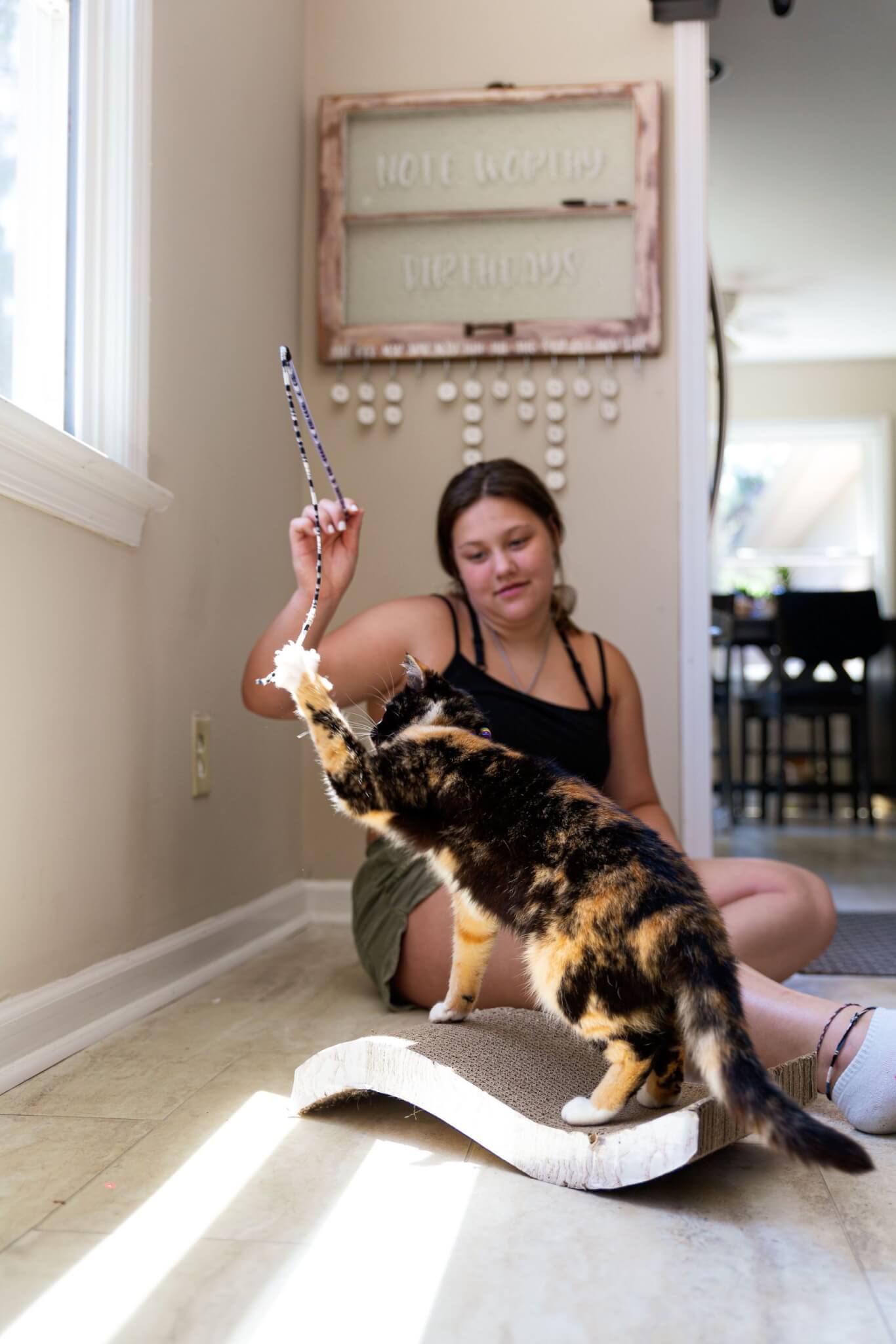

Dog Water Safety | Protect Your Pet at the Beach, Lake, and Pool
Spending time in the water with your pet can be a fun way for them to enjoy the great outdoors, especially during the hot months of summer. However, knowing the basic rules of water safety is a must for all pet parents, especially considering over 5,000 dogs are estimated to drown in pools each year.
The most important water safety rule is to keep an eye on your pets any time they are near water. This includes pools, oceans, lakes, and rivers. Never allow unsupervised swimming as accidents can happen very quickly.
Most dogs can swim, but not all of them enjoy it and some dog breeds are naturally better swimmers than others. Retrievers and Poodles in particular are known to be excellent swimmers. On the other end of the spectrum, you should be especially careful around water with brachycephalic breeds (breeds with flat faces) such as Bulldogs, Pugs, and Shih-Tzus as well as any mixed breed that has a short snout. These breeds’ flat faces and big chests cause them to tire more quickly while swimming and put them at increased danger of sinking. Be sure to keep a close eye on puppies as well. Puppies are clumsy and energetic, which makes it easy for them to fall into a pool. They also tire very quickly.
In addition to supervising your dog during swim sessions, here are some other safety tips to keep in mind:
Water Conditions
Check the current water conditions if you plan to let your dog swim in the ocean or a river. Rip currents, undertows, or fast moving currents can be extremely dangerous for canines and humans alike. You should also make sure the water temperature is not too cold. A general rule of thumb is that if you are cold in the water, it is probably too cold for your pet.
Take Precautions
Your dog should be able to easily get out of water on their own. Install stairs they can climb, a ramp that is made for pets, or a fence around the pool. Make sure that the fence is tall enough to keep them out and keep the gate secure.
Life Jackets
Dog life jackets not only keep your dog afloat, but can also help you spot them in the water and make it easier for you to pull them out since dog life vests have handles on them. Consider purchasing one for your pet, especially if you are taking them out on a boat.
Bring Drinking Water
Make sure you have fresh drinking water for your dog to drink. Letting them lap up lake, river, pool, or ocean water can make them sick since it can contain bacteria, algae, parasites, chemicals, or salt.
Take Breaks
Swimming can be very tiring for dogs. Stay close to your pet and make sure they take breaks in the shade.
Wash Up
Rinse off your dog or give them a bath after swim sessions. Salt or pool chemicals can irritate your dog’s skin. Additionally, if your dog licks their fur, the salt or pool chemicals could make them sick.
Remember, not all dogs like to swim or are good swimmers. If your canine companion is more of a land lover, try introducing them to baby pools or spraying them with a hose as alternative outdoor water activities.

John Wallace | In Service to the VBSPCA for 10+ Years
For more than a decade, John Wallace has served on the Virginia Beach SPCA Board of Directors. However, his ties to the organization date back much further. “I have been familiar with the VBSPCA most of my life and adopted my first pet in the mid-80s. I was very impressed by the number of animals the VBSPCA finds home for each year and felt I could help serve its mission.”

With a background in banking and financial planning, Wallace uses his expertise to provide financial guidance to the VBSPCA. He currently serves as a Financial Advisor and Director of Strategic Planning with Impact Financial Partners. Wallace has lived in Virginia Beach for most of his life and is dedicated to giving back to the community. In addition to his service to the VBSPCA, Wallace serves on the United Way’s Community Investment Committee and on the board of the Financial Planning Association of Hampton Roads.
Wallace is most passionate about connecting pets with as many adopters as possible. “Our staff is extremely passionate and makes an incredible effort to take care of the animals and provide them forever homes,” said Wallace. He also notes that the VBSPCA “makes a significant impact in other ways through its educational programs, veterinary clinic, and Neuter Scooter.”
Wallace believes everyone should learn about animal welfare and encourages people to check out the many resources available including the VBSPCA website. His other piece of advice? “Seek opportunities to get involved by volunteering, fostering a pet, or adopting.”
Dedicated individuals like Wallace ensure the VBSPCA can continue working towards its mission of eliminating animal suffering. We are grateful for everything he does to help our animals!
If you are interested in serving on the Virginia Beach SPCA Board of Directors, please email Emily.Peck@vbspca.com for more information.
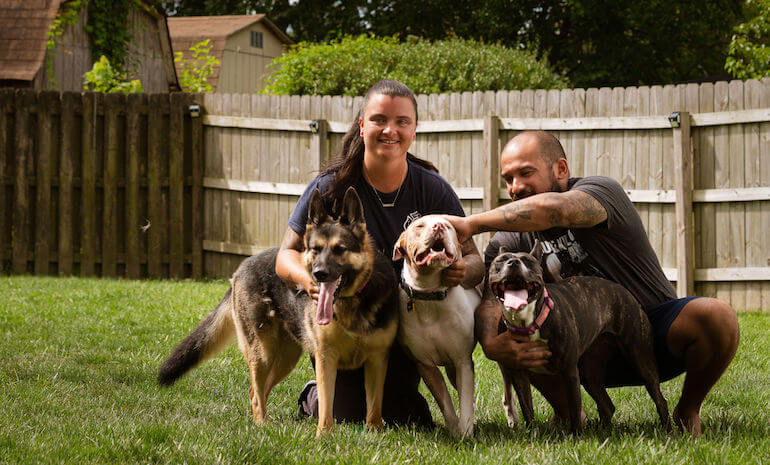
Happy Tails | Tonka
Every single animal that comes through our shelter has a story. Some are complex, many are sad, but all of them get better the minute they arrive at the Virginia Beach SPCA. Tonka arrived in December 2020 when he was transferred from an animal shelter in North Carolina. The three year old Catahoula Leopard Dog mix needed a special home since he is deaf and very high energy. Additionally, Tonka needed to go through heartworm treatment with the help of the VBSPCA Clinic. After two months of waiting, Tonka’s perfect match appeared and he was adopted in February 2021. We recently caught up with his owner Katlin to see how Tonka has settled into his forever home.
How did you find Tonka?
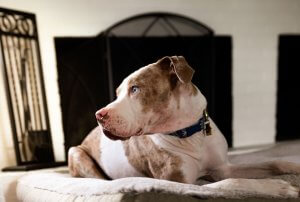 After tragically losing our last dog, we wanted to give a home to a dog in need. We often went to the Virginia Beach SPCA in search of a new family member, and Tonka always stuck out to us. Finding out his special needs and knowing we have two additional dogs, we knew it would be hard but possible. After visiting and doing a meet a greet with Tonka, we went home and completely cleared out our third bedroom as that would be his home during his heartworm treatments to rest. After three rounds of meet and greets with both of our dogs, the staff finally gave us the amazing news of “it’s a perfect fit.”
After tragically losing our last dog, we wanted to give a home to a dog in need. We often went to the Virginia Beach SPCA in search of a new family member, and Tonka always stuck out to us. Finding out his special needs and knowing we have two additional dogs, we knew it would be hard but possible. After visiting and doing a meet a greet with Tonka, we went home and completely cleared out our third bedroom as that would be his home during his heartworm treatments to rest. After three rounds of meet and greets with both of our dogs, the staff finally gave us the amazing news of “it’s a perfect fit.”
How is Tonka doing in the home?
Tonka is doing amazing at home! Of course it was a process in the beginning but it was well worth it. He is gaining some much needed weight, getting all the proper shots and exams for his heartworms, and, of course, having the much needed feeling of being at home with family.
 What sort of activities do you and Tonka do together?
What sort of activities do you and Tonka do together?
Where do I even begin with his activities? It all starts with him waking us up for his morning feeding at a proper 7am. After that he takes his usual one hour nap. Then it’s all playing fetch and tag with the dogs in the backyard. His favorite is letting the other dogs get the toy, but then trying to retrieve it out of their mouth. Afterwards they come in for a nice tasty treat.
Does Tonka have any funny quirks?
Tonka’s famous and funniest quirk is looking into the mirror and always thinking it’s another dog. No matter how many times he passes the SAME mirror, it’s always another dog. He will spend hours just growling and staring into the mirror. At night we always have to drape a sheet over it for him to lay down.
How has Tonka enriched your life so far?
Tonka has not only enriched Adrian and I with being happy, but both of our dogs with giving them an added brother!
Why do you think people should consider adopting a special needs pet?
People should consider adopting a special needs dog because it builds a more unique bond. It’s easy to adopt a dog who can hear you and train, but to take the time and work hard training one who is deaf – it’s a feeling I can’t even begin to describe. It’s that moment that you see in the dog that everything clicks: you literally cry of happiness.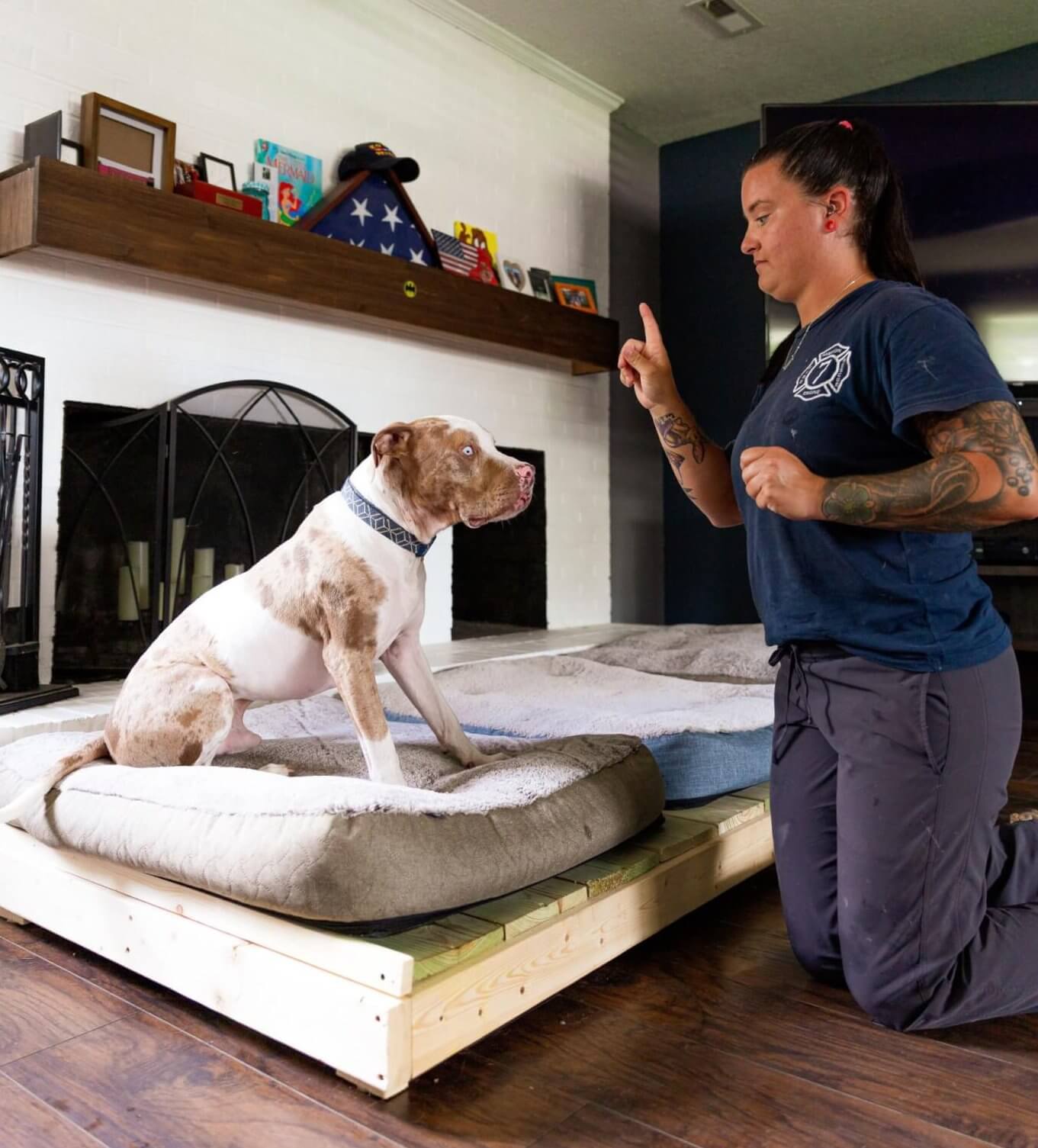

Jan Fine | In Service to the VBSPCA for 15+ Years
Jan Fine is a very familiar face at the Virginia Beach SPCA. For more than 15 years, she has served on the VBSPCA Board of Directors. When asked why she is so devoted to the organization, she simply says, “I have always loved animals and have been lucky to have them in my life.”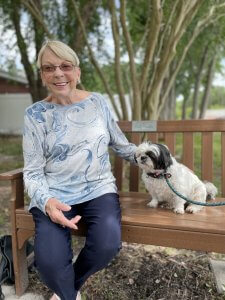 From a varied career history to a long track record in volunteering, Fine brings a wide array of experience and insight to her role on the board. She has done everything from editing reports to the Atomic Energy Commission for G.E. to owning her own gift shop. Fine’s volunteer work outside of the VBSPCA includes chairing the Boardwalk Art Show and Norfolk Academy’s Field Day as well as chairing galas for MOCA and the Virginia Aquarium.
From a varied career history to a long track record in volunteering, Fine brings a wide array of experience and insight to her role on the board. She has done everything from editing reports to the Atomic Energy Commission for G.E. to owning her own gift shop. Fine’s volunteer work outside of the VBSPCA includes chairing the Boardwalk Art Show and Norfolk Academy’s Field Day as well as chairing galas for MOCA and the Virginia Aquarium.
Fine is most passionate about adopting animals into loving homes. “Putting the right animal with the right family in a happy forever home is very special,” she says. “I also love that we can help to provide medical services in our community through our fantastic veterinary clinic.”
Fine’s passion for volunteer service is contagious. “The volunteer program is a wonderful way that people can get involved with the VBSPCA,” she suggests. “Attending fundraisers also helps to support animals at the shelter.”
Dedicated individuals like Fine ensure the VBSPCA can continue working towards its mission of eliminating animal suffering. We are grateful for everything she does to help our animals!
If you are interested in serving on the Virginia Beach SPCA Board of Directors, please email Emily.Peck@vbspca.com for more information.
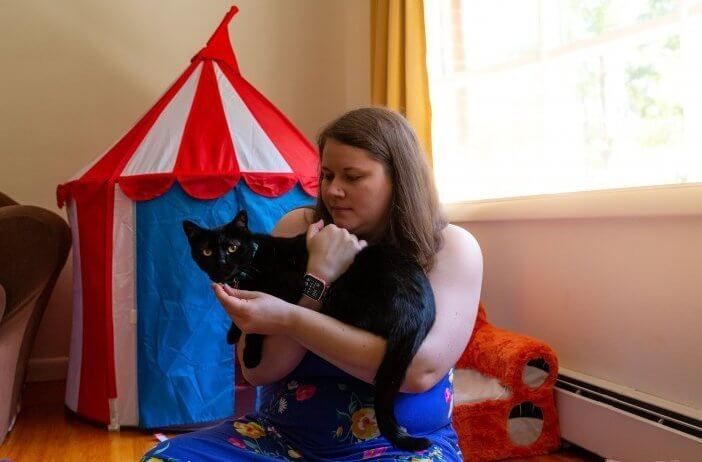
Happy Tails | Shadow
Every single animal that comes through our shelter has a story. Some are complex, many are sad, but all of them get better the minute they arrive at the Virginia Beach SPCA. Shadow arrived in November 2020 when his owner could no longer care for him and his sister. He was in need of dental surgery and had lost patches of hair. After the VBSPCA Clinic gave him the care he needed, he waited patiently for his forever home. After three months at the shelter, Shadow’s life changed when Katie and her family visited him in February 2021. Katie recently shared Shadow’s adoption story with us.
How did you know Shadow was the one for you?
 We were originally looking for a kitten. We have a rambunctious 2 year old boy and thought it would be easier for a kitten to get used to our loud household. After looking around at different shelters, we really couldn’t find any kittens or they would be snatched up so quickly we couldn’t get there in time. I finally started asking shelters if they had any family friendly cats or cats who tolerated kids. When I got to the VBSPCA, I asked and they pointed me immediately to Shadow, saying he was very affectionate with kids. I visited him and fell in love with him. All he wanted to do was rub and love on me. Even when I tried to play with him, he would just rub his head all over my hand. He is still the most affectionate cat I have ever met.
We were originally looking for a kitten. We have a rambunctious 2 year old boy and thought it would be easier for a kitten to get used to our loud household. After looking around at different shelters, we really couldn’t find any kittens or they would be snatched up so quickly we couldn’t get there in time. I finally started asking shelters if they had any family friendly cats or cats who tolerated kids. When I got to the VBSPCA, I asked and they pointed me immediately to Shadow, saying he was very affectionate with kids. I visited him and fell in love with him. All he wanted to do was rub and love on me. Even when I tried to play with him, he would just rub his head all over my hand. He is still the most affectionate cat I have ever met.
What sort of activities do you and Shadow do together?
We love to cuddle on the couch. He loves to sit on my chest and get chin scratches from my husband and I. My son loves pet Shadow and says, “Ahh Shadow! He’s a good cat.”
Does Shadow have any funny quirks or do you have any funny stories to share from your time together?
He is a beggar for food! I wasn’t expecting that from him. Whenever we go to the kitchen, he RUNS ahead of us, meowing, tail twitching and showing us the cabinet that we keep his food and treats in. When we get the bag of treats, he stretches on us and meows.
How has Shadow enriched your life so far?
He is the most affectionate cat we’ve ever known. He has a powerful purr and is the most patient, sweet cat I know. The minor inconvenience of litter and fur mean nothing in comparison with the love that he gives our little family.
Why do you think people should consider adopting a senior pet from a shelter?
Senior cats don’t need constant attention like kittens do. You have to constantly get energy out of a kitten, while a senior cat knows how to get energy out for themselves. For a while, I was looking into buying a purebred cat that is known for affection. But after my experience with the VBSPCA, now I know that all you have to do is ask the staff for the traits you are looking for in a pet. You save yourself money and your cat’s life by adopting from a shelter. You don’t need an expensive pet to get the love and affection you are looking for in a pet. We absolutely love our sweet cat and find ourselves lucky.
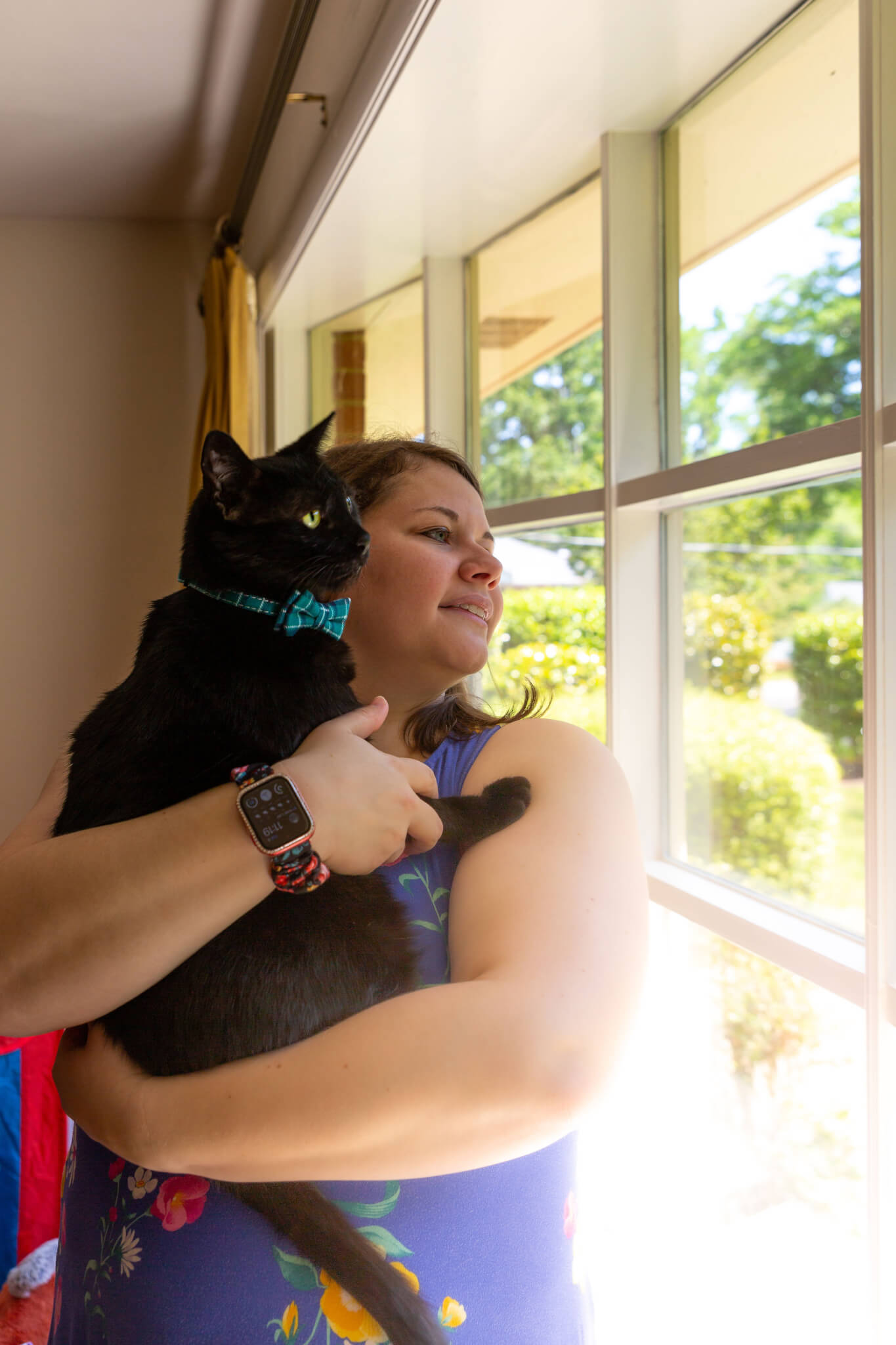
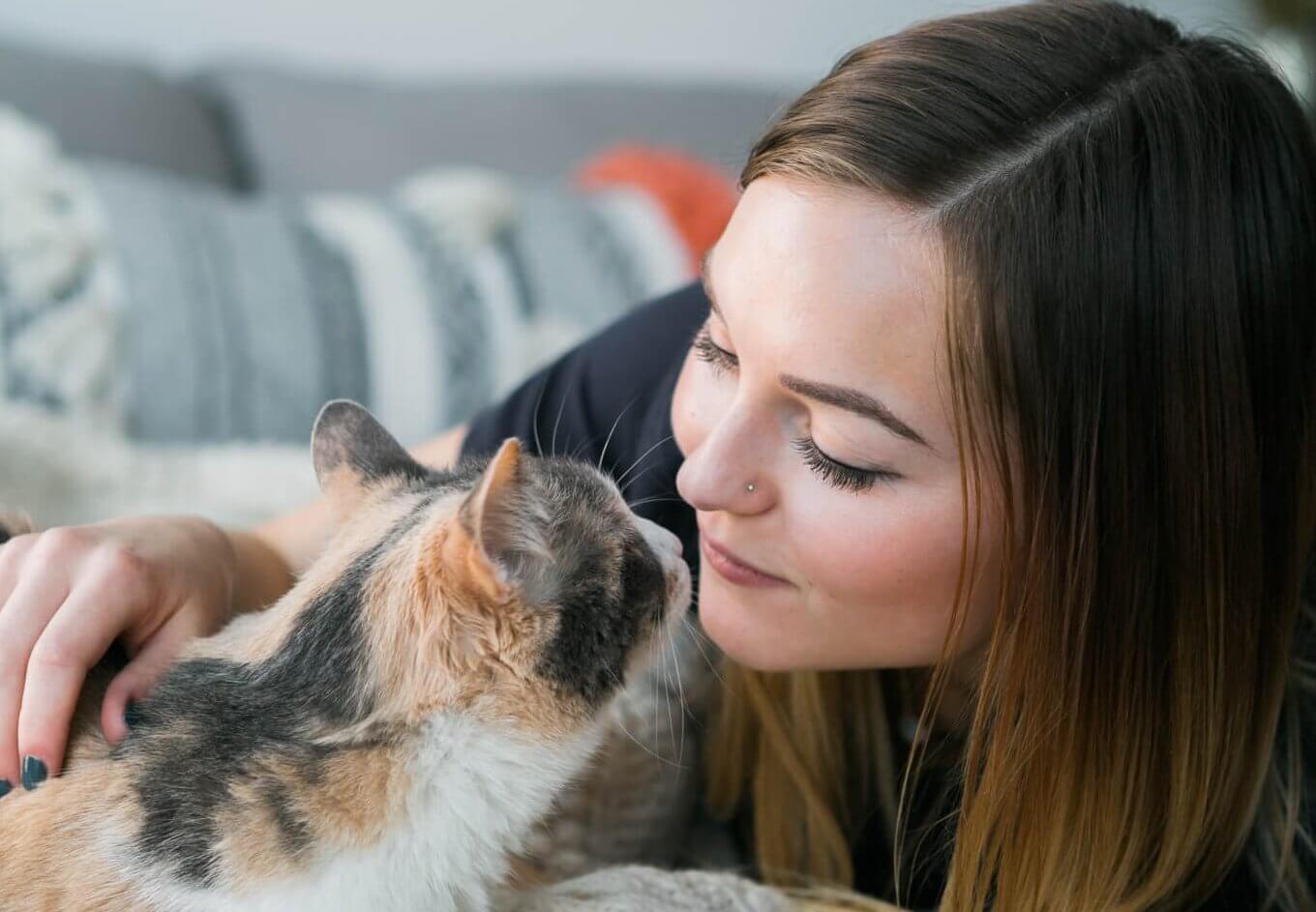
Pet Companionship | Health Benefits & Healing Power
Ask any pet owner, and they’ll tell you that their furry friend is an important part of their life. In fact, research has shown that having an animal companion is not only enjoyable – pets can actually help improve your mental health!
Pet ownership has been shown to reduce stress, anxiety, depression, and loneliness. That is very encouraging for the approximately 40 million adults in the United States who are affected by depression and anxiety. Here is a look at the science behind healing powers of the human-animal connection.
- Animal interactions boost the mood. Oxytocin and dopamine, the neurochemicals associated with positive feelings and bonding, have been observed in both dogs and people after enjoyable interactions like petting and playing.
- Pets reduce stress. Interacting with animals has been shown to decrease levels of cortisol (a stress-related hormone) and lower blood pressure.
- Having a pet can reduce feelings of loneliness. According to a survey by the Human Animal Bond Research Institute, 87% of respondents, both pet owners and non-owners, reported that interactions with an animal help combat feelings of loneliness. Additionally, dog owners can feel more connected to other people since walking your canine companion or taking him to the dog park can create chances for socialization, which can ease symptoms of depression.
- Walking a dog is especially helpful. Walking increases endorphins, which fight depression. Owning a dog can lead to a daily exercise routine that can help reduce stress levels, increase self-esteem, and the development of better sleep patterns.
While pet ownership is no substitute for professional medical treatment, it can provide a boost in your emotional health. And when you adopt an animal from the VBSPCA or any other animal shelter, you’re not the only one who benefits from the adoption – you’re providing a second chance for a homeless animal.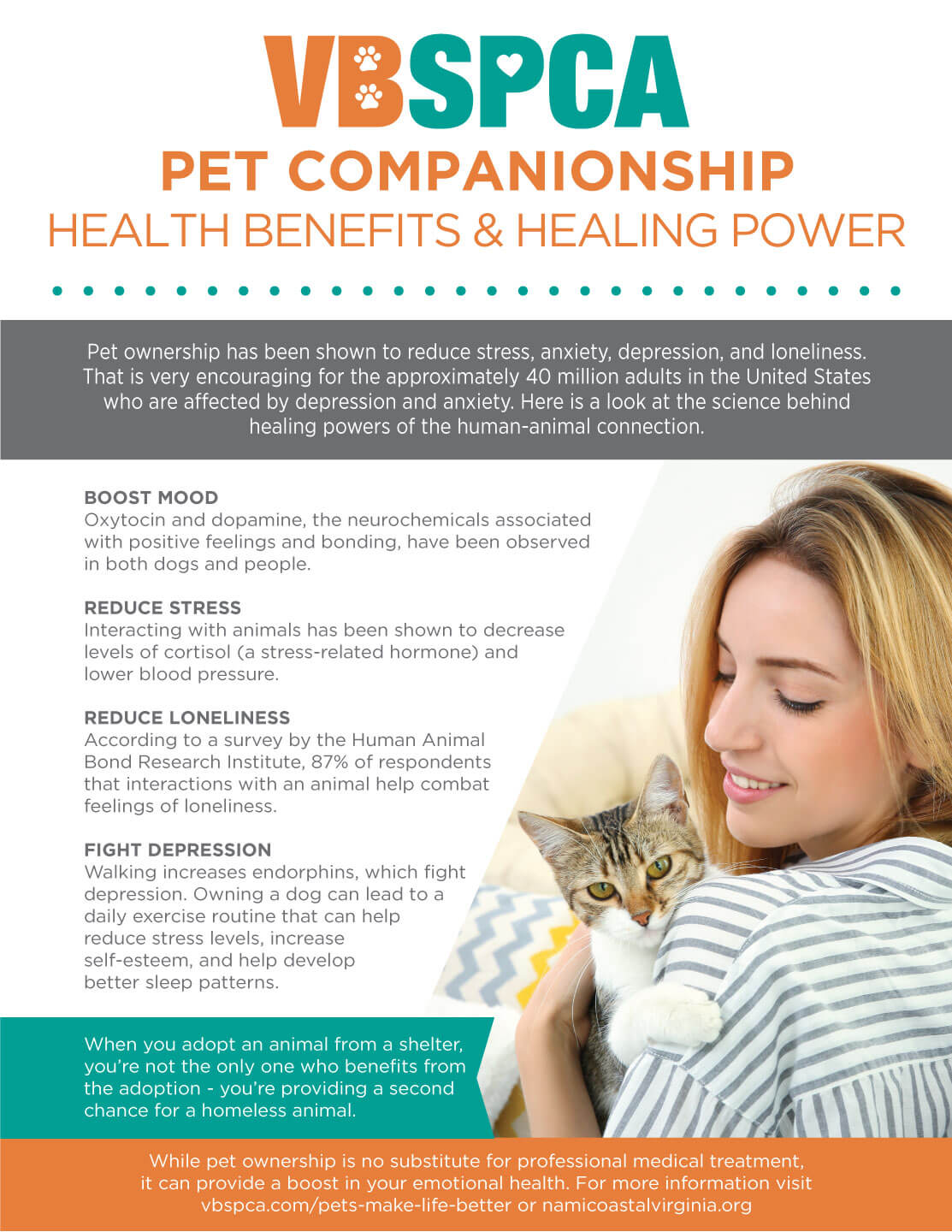

Happy Tails | Peabody
Every single animal that comes through our shelter has a story. Some are complex, many are sad, but all of them get better the minute they arrive at the Virginia Beach SPCA. Peabody came to the VBSPCA in October 2019 when his owner surrendered him. The three year old hound spent just over a month in our shelter before he met Christy. She noticed his hopeful eyes and quickly decided he was the dog for her. Christy says when she returned to pick him up, he ran to her and hasn’t left her side since then. We recently caught up with Christy, who shared just how special their bond has become.
 We heard that Peabody was training to become a service animal – can you share a little about that and his progress?
We heard that Peabody was training to become a service animal – can you share a little about that and his progress?
Peabody was evaluated by an organization called Train a Dog Save a Warrior (TADSAW). They work with military veterans and their families that have multiple types of disabilities. His training is completed, we are just waiting for the Public Access Test. We are very proud of how well and fast he learned his commands and job. He is a true blessing in my life.
How is Peabody doing in the home?
Peabody is doing amazing at home. He loves his sister, potbelly pig Bacon Bits, and loves going to the park. He is our funny, loving guy.
What sort of activities do you and Peabody do together?
Peabody and I do Instacart together (we grocery shop for other people). We also go for long walks, playdates at the dog park, we travel to Kentucky to visit friends, and we meditate together.
Does Peabody have any funny quirks?
One of Peabody’s quirks is he loves blankets – he will try to crawl under anything that looks like a blanket. He also will pout and throw a temper tantrum if I have a guest in the car and they sit in his seat.
How has Peabody enriched your life so far?
 Peabody has enriched my life by bringing a smile to our hearts, he lends us his ears when we just need to vent, and makes us laugh with his cute little prance he does when he is excited to go outside or to work. There are days I would be lost and still stuck on my couch if it wasn’t for him and him needing to be taken care of.
Peabody has enriched my life by bringing a smile to our hearts, he lends us his ears when we just need to vent, and makes us laugh with his cute little prance he does when he is excited to go outside or to work. There are days I would be lost and still stuck on my couch if it wasn’t for him and him needing to be taken care of.
Why do you think people should consider adopting a pet from a shelter?
Shelter dogs make great companions; they are forever grateful for the home and life that they receive. This also helps open doors and kennels for other pets to come in and find their happily ever after.
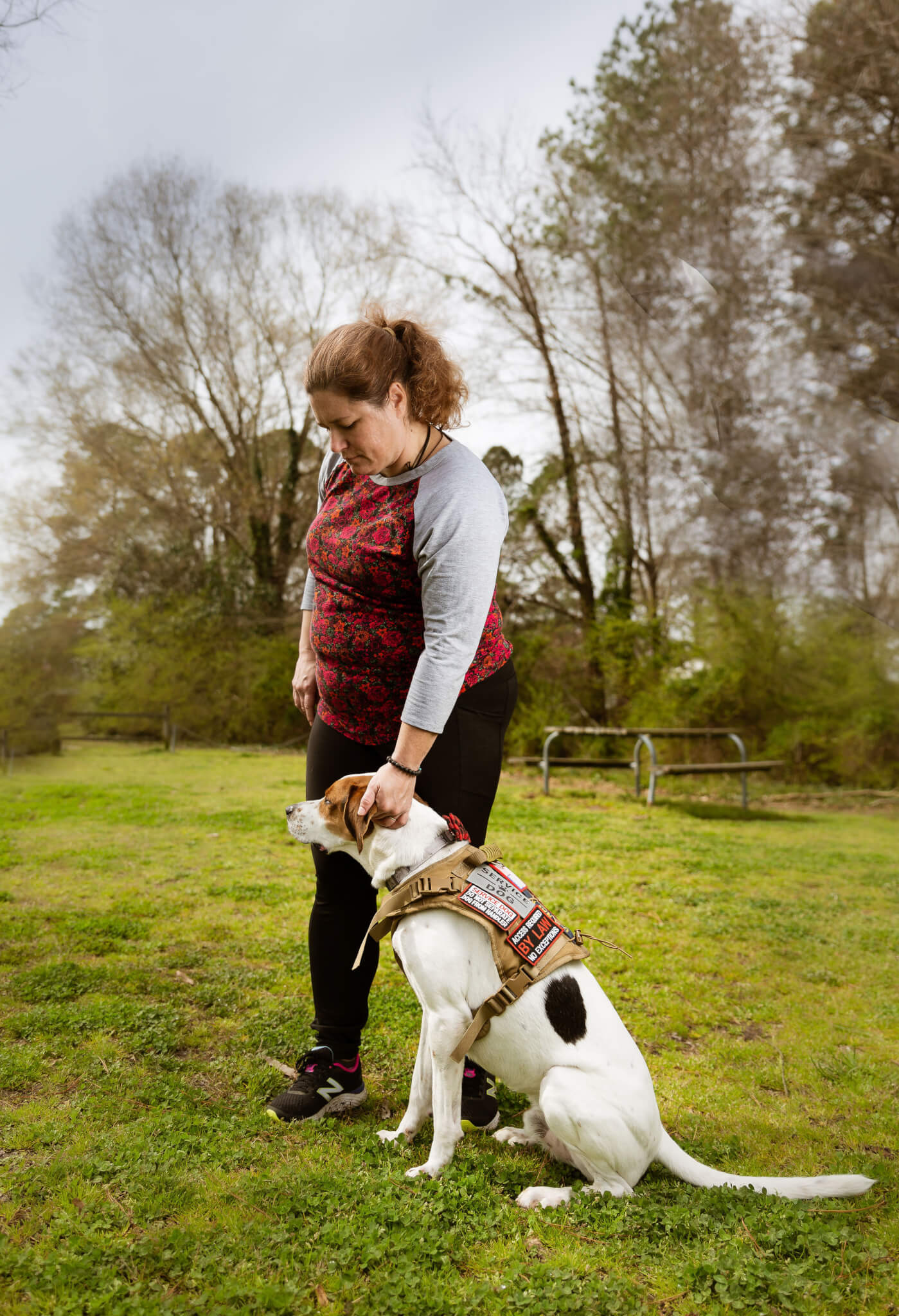

Dog Bite Prevention | Recognize The Warning Signs
According to the Centers for Disease Control and Prevention, more than 4.5 million people are bitten by dogs in the United States each year, and more than 800,000 seek medical attention for dog bites. Common reasons for a dog to bite include feeling scared, being startled or threatened, trying to protect something that is valuable to them (like food or toys), sickness, or injury. Dogs can also nip and bite during play.
All dogs can bite regardless of size, breed, or age if they are provoked. While there are simple things pet parents can do to prevent dog bites from happening, it is equally important to first understand what a dog is trying to tell you from their body language and behaviors.
What Dogs are Trying to Tell You
By paying close attention to a dog’s body language and behavior, you will be much less likely to be bitten. The ASPCA has listed the following signs of aggression, fear, or anxiety, which are feelings that can lead to a bite.
Signs of aggression include efforts to make the dog look bigger:
- Ears positioned upward and forward
- Raised fur on the back and/or tail
- Vertical tail, may be wagging very quickly
- Stiff, straight-legged stance
- Staring
- Growling, lunging, or barking
Signs of fear or anxiety include efforts to make the dog look smaller:
- Cowering and/or lowering of the head
- Repeated lip licking
- Tucked tail
- Flattened ears
- Yawning
- Avoiding eye contact
- Remaining very still
- Growling or snarling
If you encounter any of these signs, it is best to give the dog some space.
What You Can Do to Prevent Dog Bites
Aside from reading a dog’s body language, there are things you can do to reduce the chance of the dog biting you or someone else.
- Socialize your dog. By introducing your dog to other animals and people, you will help them feel more comfortable overall. Familiarizing your dog with everyday situations will make them less likely to become fearful and bite. However, you should let your pet go at their own pace. Don’t force them to interact with other people and animals when they are uncomfortable.
- Spay or neuter your dog. Studies have shown that altering your pet can help reduce their likelihood of biting.
- Know when to leave a dog alone. There are several situations that can make a dog more likely to bite. Those include when he is eating, sleeping, sick, injured, or positioned on the other side of a fence from you. You should also never approach a dog you don’t know without permission from their owner or any female dog who is with her puppies.
- Always supervise children when they are around a dog. Children are most likely to be the victim of dog bites, so do not leave them unattended with a pet. You can find more tips for child and pet safety here.
If you notice your dog has the tendency to be aggressive, fearful, or anxious, consider getting help from a certified trainer. You can find our list of recommended trainers here.


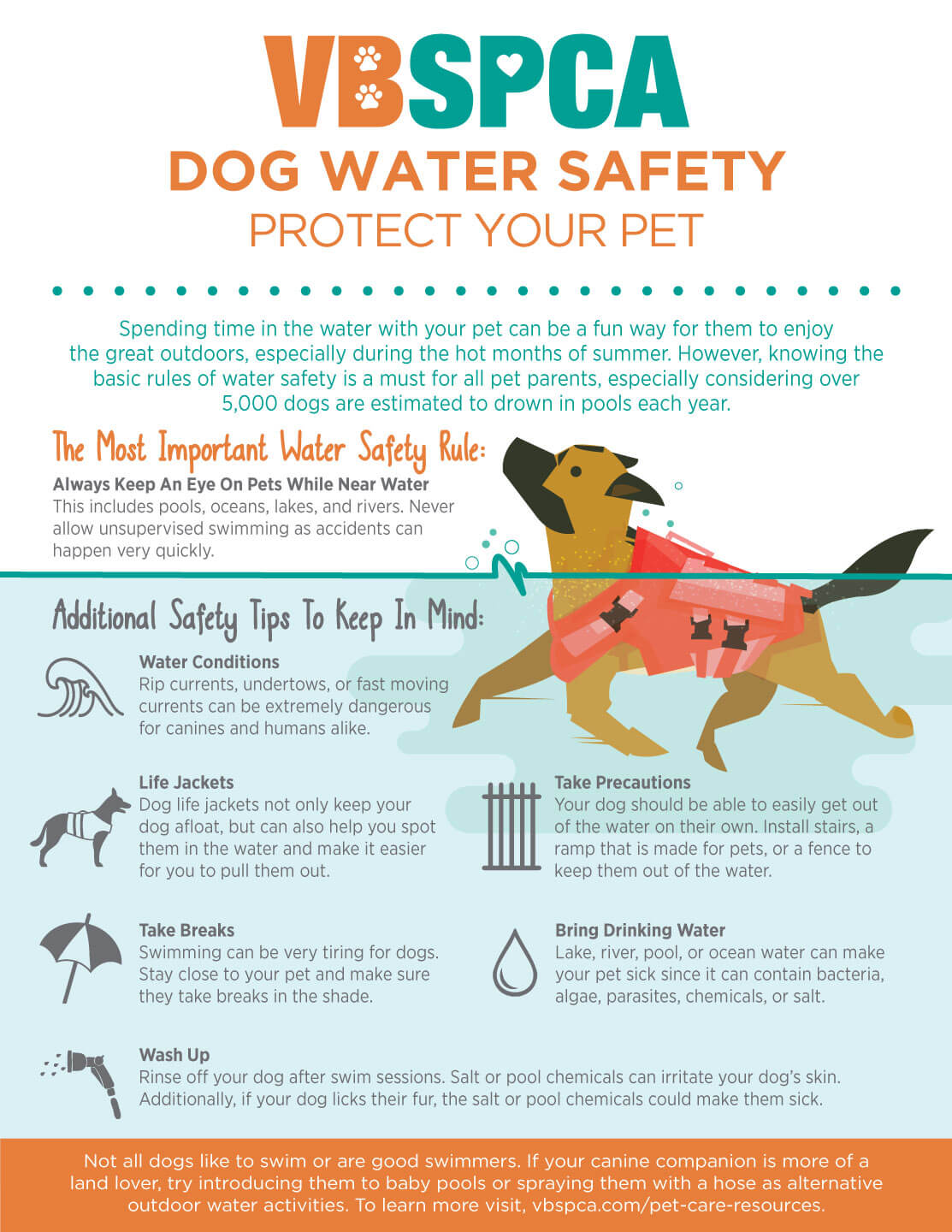
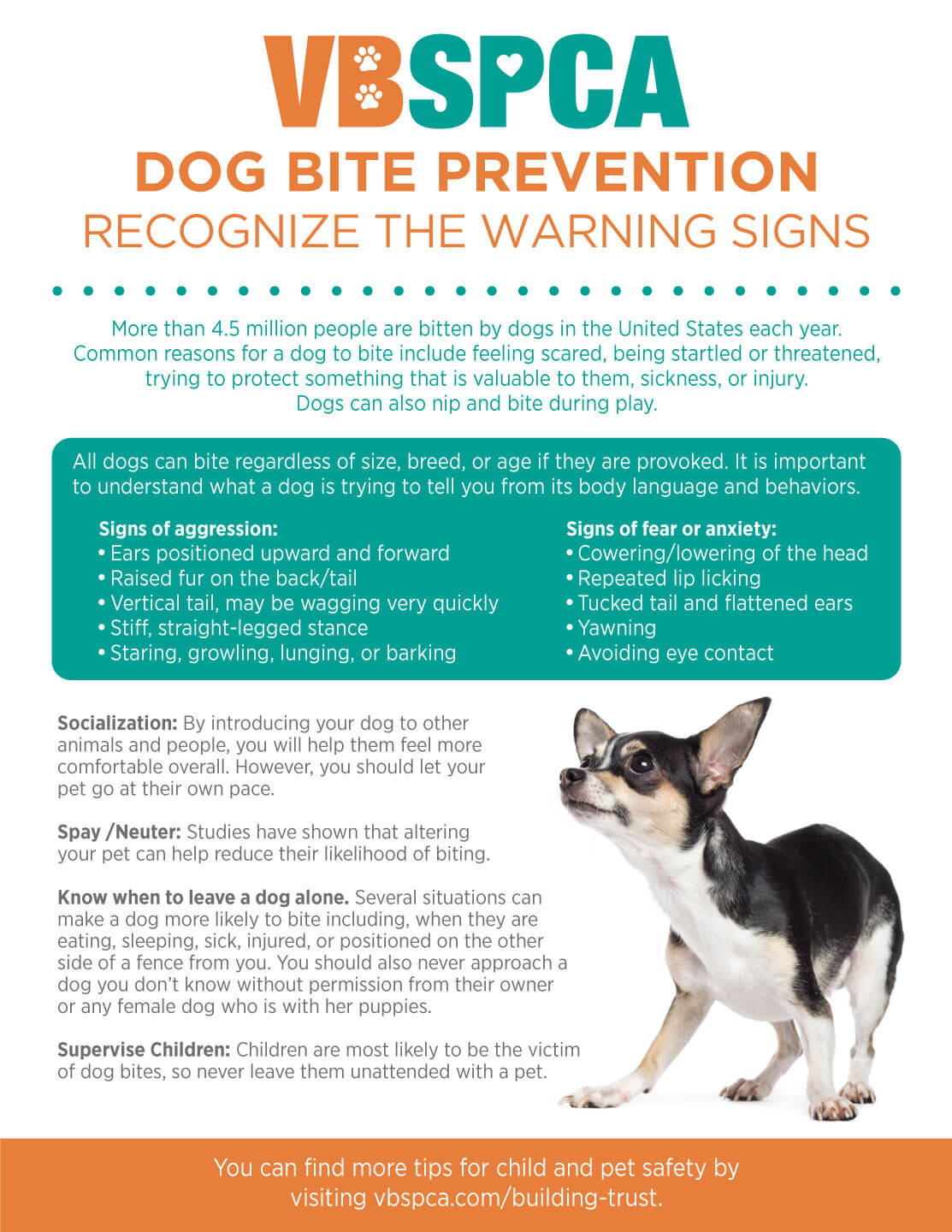



















Last Updated: June 3, 2022 by vbspcaadmin
Scott Taylor | In Service to the VBSPCA for 8 Years
Since 2013, Scott Taylor has been a very familiar face at the Virginia Beach SPCA. It all started with a tour of the VBSPCA Shelter. “The impact that was evident during that first visit spoke to me, and I knew I had to do more than volunteer or donate,” Taylor recalled. He joined the VBSPCA Board of Directors that year and later stepped up as Board Chair in 2017.
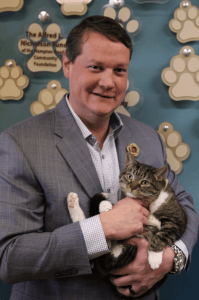 With his experience as a business owner, Taylor has successfully guided the VBSPCA through unique periods of change thanks to his expertise and leadership skills. He has also donated the time and services of his businesses, Taylor Construction and Va Valet, as well as sponsored numerous VBSPCA events. For Taylor, giving back to his community is a must. “To me, being philanthropic is not a choice – it’s a requirement,” said Taylor. His support of the VBSPCA stems from the compassion for animals demonstrated by his father. Taylor currently has two cats, Olivia and Penny, who were both adopted from our shelter.
With his experience as a business owner, Taylor has successfully guided the VBSPCA through unique periods of change thanks to his expertise and leadership skills. He has also donated the time and services of his businesses, Taylor Construction and Va Valet, as well as sponsored numerous VBSPCA events. For Taylor, giving back to his community is a must. “To me, being philanthropic is not a choice – it’s a requirement,” said Taylor. His support of the VBSPCA stems from the compassion for animals demonstrated by his father. Taylor currently has two cats, Olivia and Penny, who were both adopted from our shelter.
As Board Chair, Taylor’s top priority has been to ensure the VBSPCA has strong leadership and financial standing in order to sustain the organization well into the future. He is inspired by the teamwork that is evident in our shelter and clinic as well as how many animals receive their second chance at our facility. “The animal welfare impact is a shockwave that continues to impact more and more people and animals as the organization grows.”
Taylor shared that he would like to challenge members of the community to think about how they could be involved with helping animals. “Maybe it’s volunteering once a month at the shelter, or going through their old linens and seeing what they can donate, or possibly [setting] up a monthly recurring donation,” said Taylor. “Anything [they] can do to help will allow us to make more of an impact on the animal community we are here to serve.”
Taylor’s time as Board Chair will come to a close in September as we enter a new fiscal year, but he will remain on the Board of Directors. We are grateful for his years of support, and his legacy at the VBSPCA will undoubtedly resonate for many years to come.
If you are interested in serving on the Virginia Beach SPCA Board of Directors, please email Emily.Peck@vbspca.com for more information.